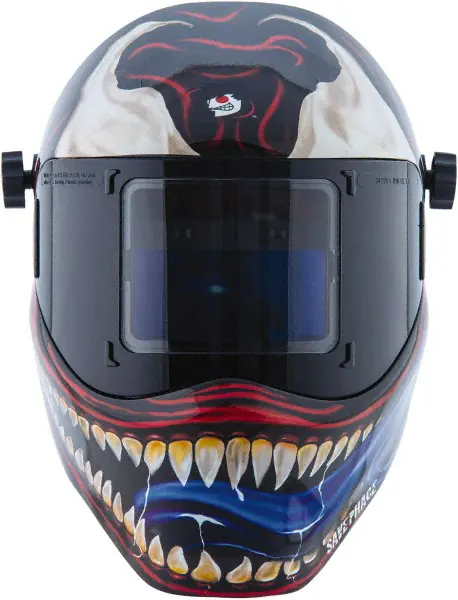These aren’t your grandfather’s welding helmets, torpedo-shaped contraptions with narrow viewports so dark they blocked out everything but the sun and the electrical arc in front of your face. Today’s successors to those early models layer style and convenience on top of safety features, offering touchscreen controls, wider auto-darkening faceplates and flamboyant graphics worthy of Comic-con or a motorcycle rally.
While welding itself is an ancient craft, with artifacts dating at least to the Bronze Age, from 3300 to 1200 BCE, welding helmets are a more recent innovation, with the earliest modern device featured in Popular Mechanics magazine in 1937.
Auto-darkening filters arrived in the 1980s, allowing welders to see their work without removing their headgear, a significant advantage in more hazardous environments.
Producers have been improving technology ever since for the personal protective equipment, which is mandated by the U.S. Occupational Safety and Health Administration to protect eyes from arcs brilliant enough to impair vision as well as from sparks and metal spatter.
Read more: Not Your Grandpa’s Welding PPE and Gear
The agency requires lenses to comply with American National Standards Institute provision Z87.1, with shades that vary in strength based on the type of job and the individual’s needs.
“It’s all about the wavelength of the light,” says Kevin Beckerdite, global product manager for PPE at ESAB Welding & Cutting Products. “We try to knock out the types of light that strain your eyes: blue light and excessively bright light, for example.”
Older welding helmets accomplished that by filtering out everything except green light, but equipment-makers have since found ways to tune auto-darkening filters so that welders can see a broader spectrum through the helmet and have more accurate visibility into their work.








Talk to Us!
Leave a reply
Your email address will not be published. Required fields are marked *